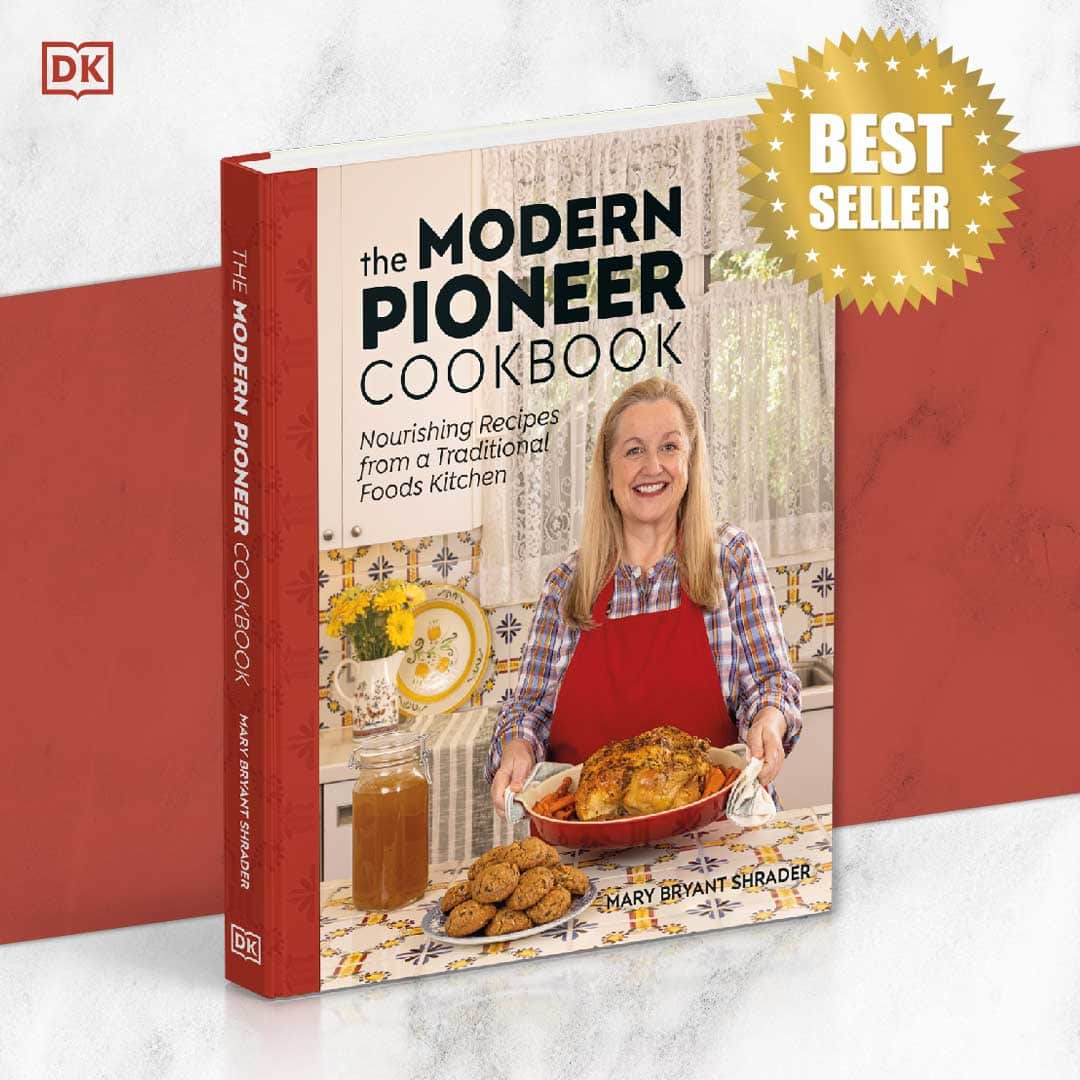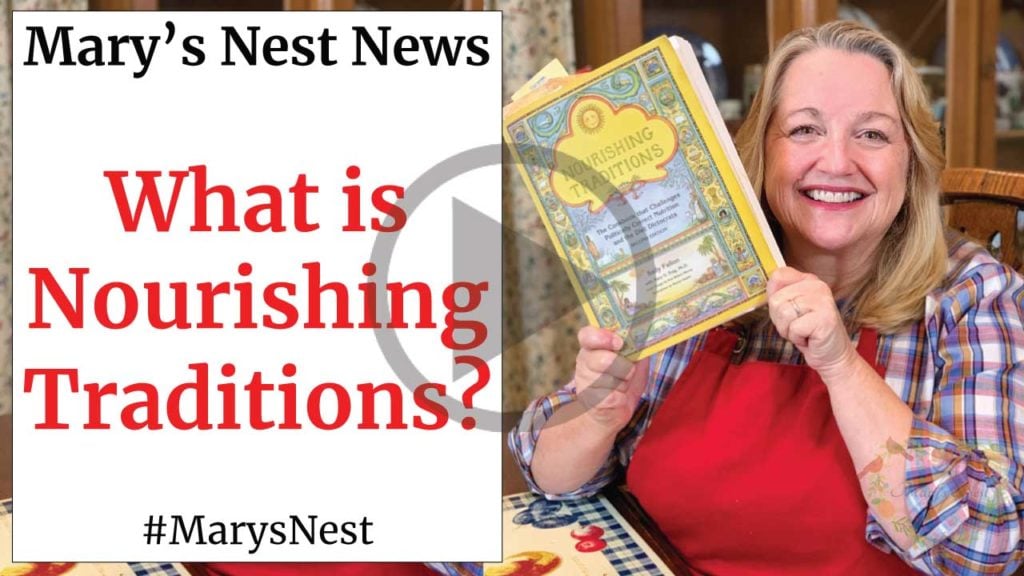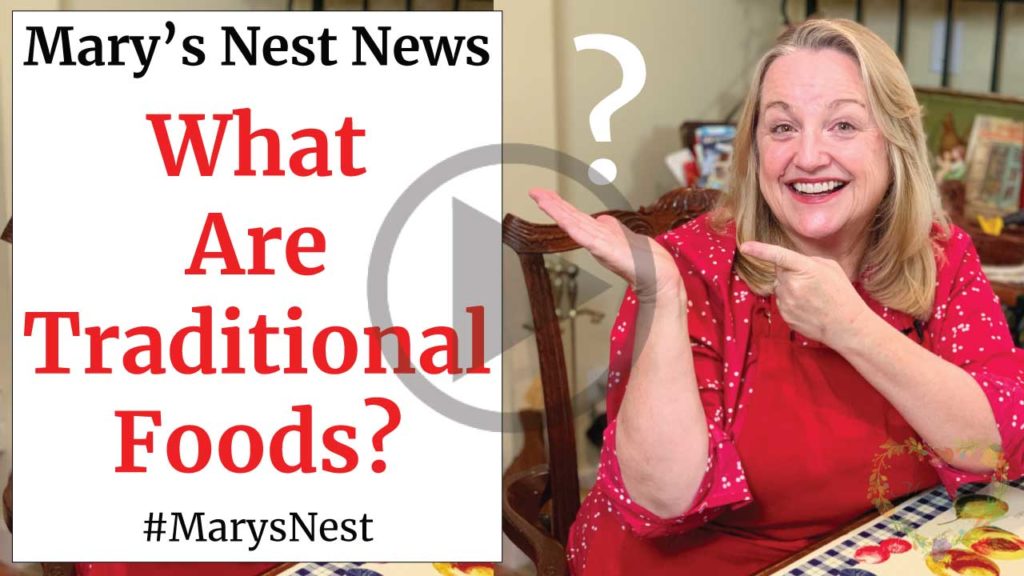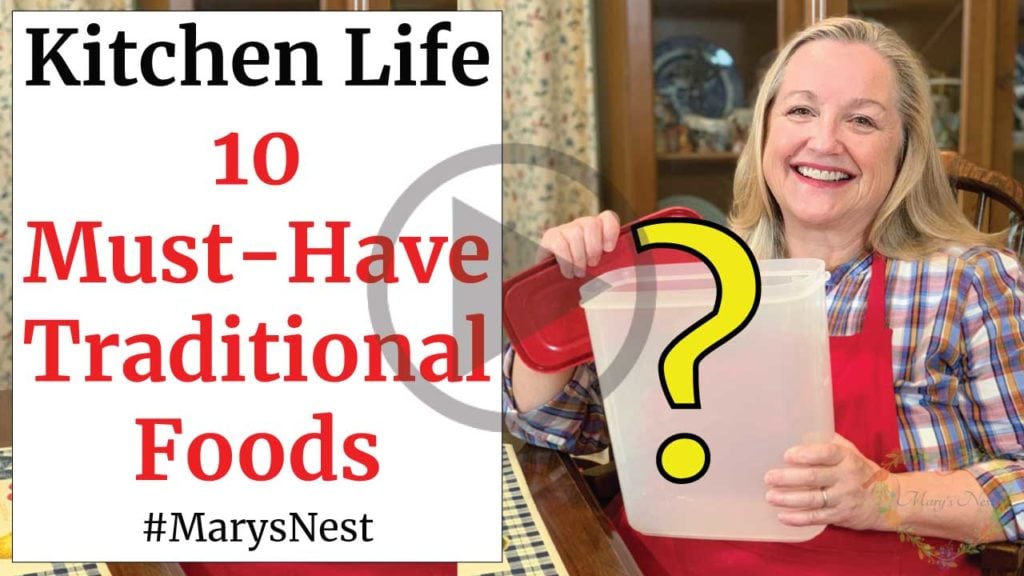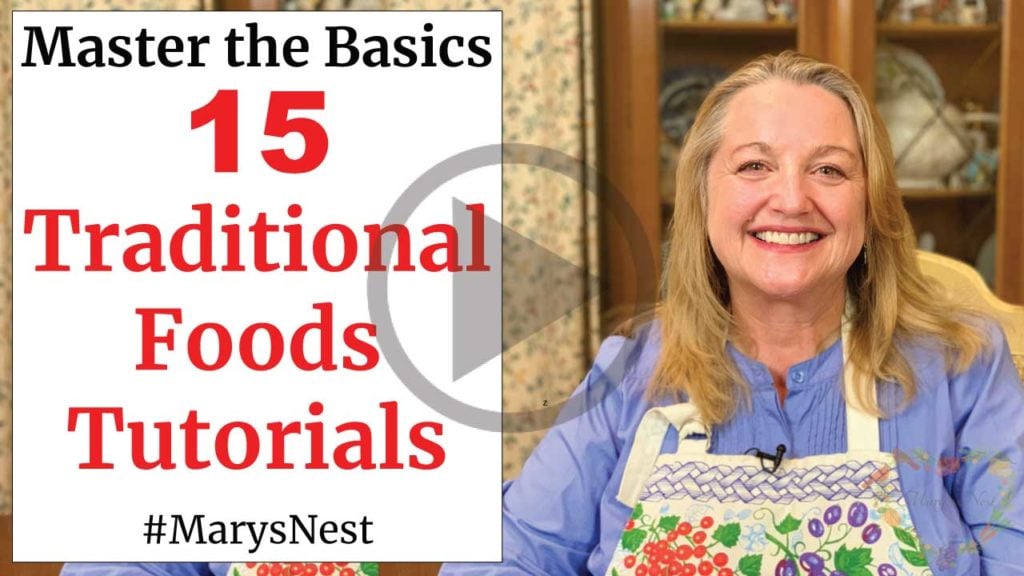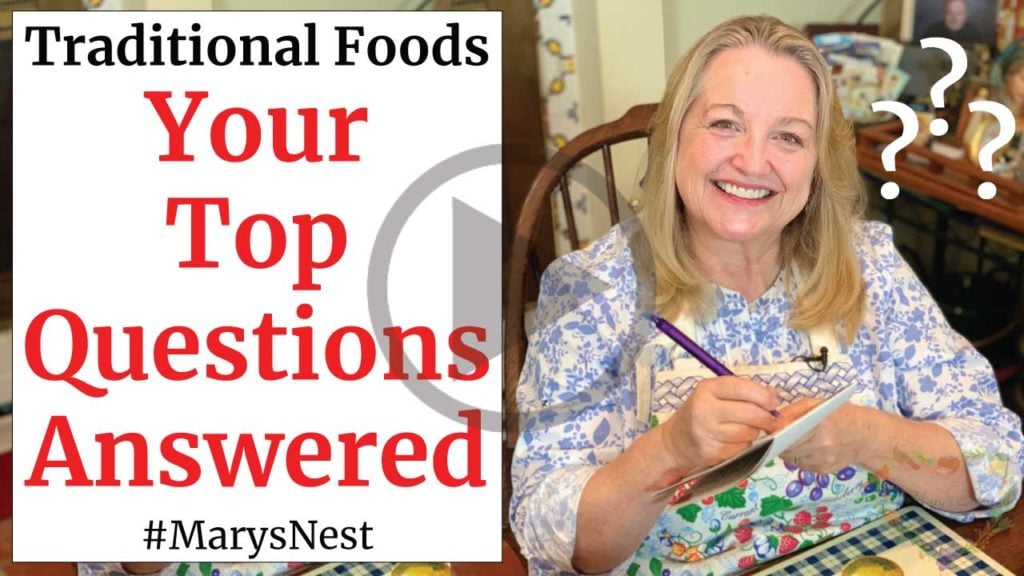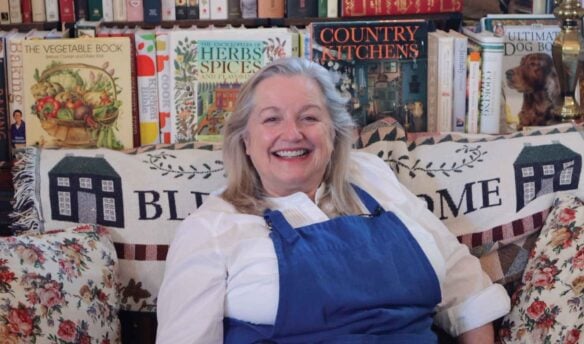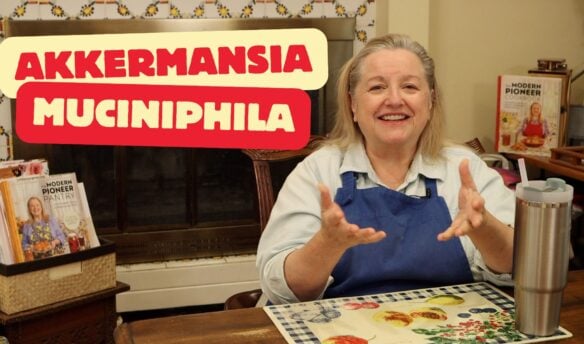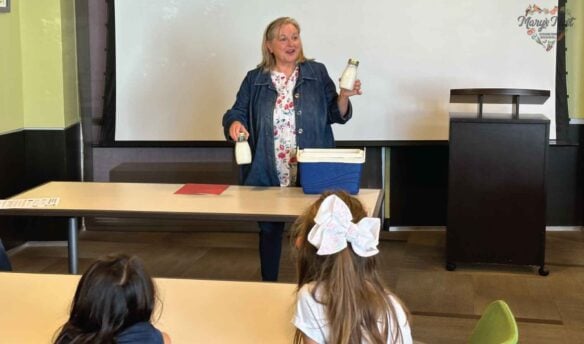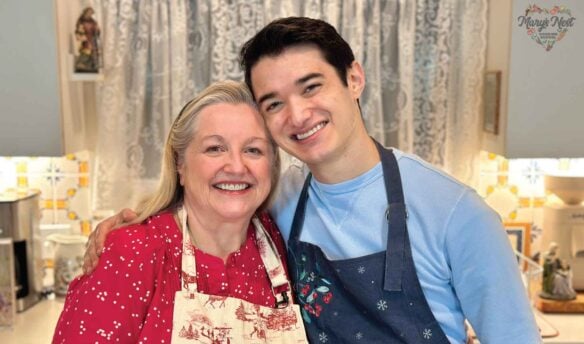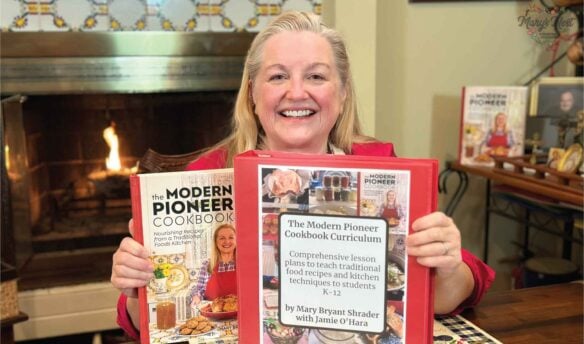Today, I want to share with you what Charlotte Mason taught me about Traditional Foods and Homeschooling. I share my experiences as a homeschool mom and a traditional foods cook in this video and blog post. I’ll answer your questions, including:
- Who is Charlotte Mason is and what does she have to do with Traditional Foods?
- Do you want to start or to continue homeschooling your children after all that’s happened this year?
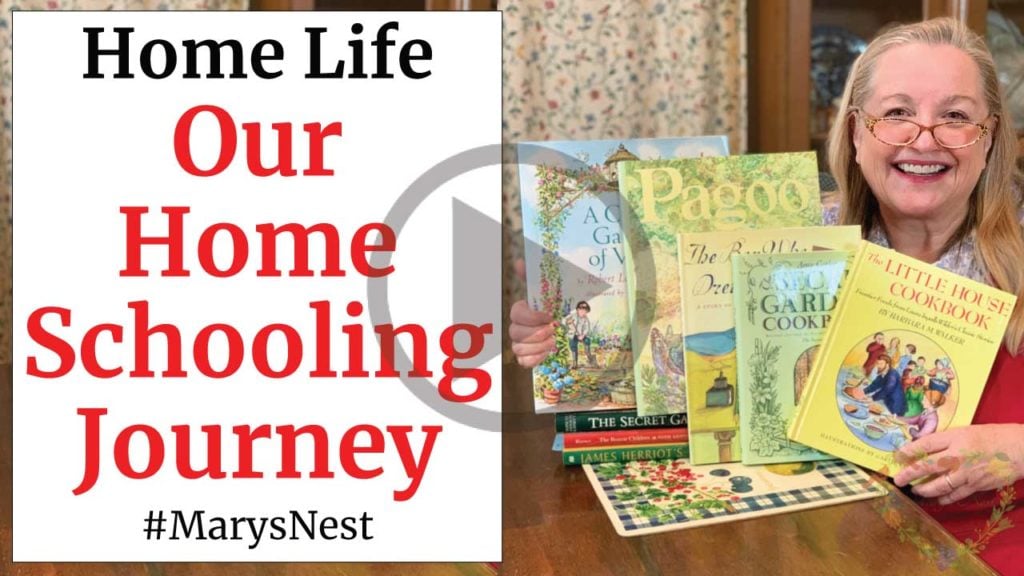
Affiliates note: As an Amazon Associate I earn from qualifying purchases. My content may contain affiliate links to products and services. If you click through and make a purchase, I’ll receive a small commission. It does not affect the price you pay.
Table of Contents
- When Homeschooling Is the Only Choice
- Why We Started Homeschooling
- The Modern Pioneer Cookbook
- Educating the Whole Person
- What Are Living Books?
- The Fun of “Read Alouds”
- Never Use Textbooks?
- Free Homeschooling Lesson Plans
- So What About Traditional Foods?
- A Traditional Foods Mini-Course
- Free Traditional Foods Pantry List
- Join the Traditional Foods Kitchen Academy
- Kitchen Academy Videos
- Shop for items used in this blog post or video
When Homeschooling Is the Only Choice
With everything we have been going through this year, many of you have been thrown into the world of homeschooling. I say “thrown in” because, in many cases, it came upon you quickly and unexpectedly. You may have had some curriculum from your child’s school to get you started. You may have had some direction as to what to do…or maybe you didn’t.
Many parents who were ready to have their children attend kindergarten were completely taken off guard with all the school closures and attendance restrictions. These parents had to try and figure out how best to begin their child’s education. And to complicate matters, there was a great deal of uncertainty as to how long this would last, including questions like:
- Would in-person schools be closed for six months or one year?
- If a school reopened, would it close again because of a public health mandate?
- Would young homeschooled kindergartners be prepared for first grade if schools stayed closed for an extended period of time?
And what about older students? Sometimes assignments online were confusing, and help from the school wasn’t always available. Sitting in front of a computer for hours on end is difficult for younger children, as well as middle school and high school age students. And sometimes, unfortunately, the online work would be left incomplete. Would these older children be ready for the next grade level?
These are valid parental concerns, but so many of you rose to the occasion and tackled this new era of home education with grace. But now what? Schools in many places have reopened, and children have the option to attend class in person. But many parents and students like the rhythm of homeschooling and are now contemplating not returning to traditional “brick and mortar” schools. But without a planned curriculum from the school, where should parents turn?
Why We Started Homeschooling
In my conversational video, I share how we started homeschooling and why we decided to use the Charlotte Mason method of home education.
As I share in my video, Charlotte Mason lived in the 1800s and into the early 1900s. She was an educator who whole-heartedly believed in educating the whole person, and her ideas work wonderfully for our modern times. It’s a beautiful and gentle way to approach home education and one that I embraced.
Educating the Whole Person
So what does educating the whole person—the whole child—look like? Well, I will tell you first what it doesn’t look like. It’s not dull textbooks and workbooks, and it’s definitely not hours on end on a computer. Instead, it is an educational process filled with “Living Books” combined with studies of the natural world and enrichment subjects.
And one of the best things about the Charlotte Mason method of home education is that it does not require a large investment to purchase a curriculum package. (I have heard from so many of you that you bought packaged homeschooling curriculums only to discover that they did not work for your child!)
When homeschooling the Charlotte Mason way, many of the books you will need can be found at the library or used books stores. (One of my favorite used book stores is Half Priced Books.) And free lesson plans are readily available online, which I share more about below.
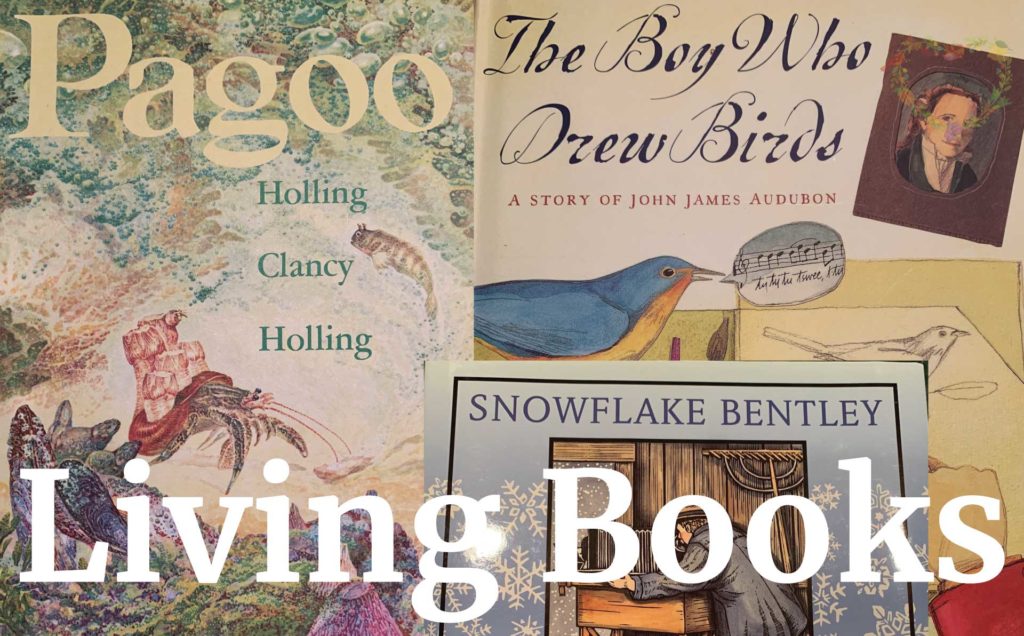
What Are Living Books?
When people are new to the Charlotte Mason method of home education, the first question most have is…What are Living Books? Great question! I explain all of this in detail in my homeschooling video—and share lots of examples—but basically, a Living Book is written by one person as opposed to many who are often involved in writing a textbook.
The author of a Living Book is someone who has a passion for the subject matter and writes in a very conversational style that makes the book extremely engaging for the reader. The writing style, in essence, “pulls” the reader into the book!
When a student—or anyone for that matter—is pulled into a book, the story:
- Creates emotions in us,
- Has us visualize the story in our mind, and
- Makes the events or facts in the book much easier to remember.
A Living Book reader will often say that the author made the subject “come alive!”
Living Books are in sharp contrast to a dry textbook or workbook that a student feels the need to “just get through it” and often, as time passes, forgets what they read. Maybe they cram for a test and then forget all about the subject.
Living Books are the opposite of boring and forgettable books. They create a love of learning and memories that live beyond the next test or current grade level. Because of their richness and value, you can easily find Living Books today on all school subjects, including math and science!
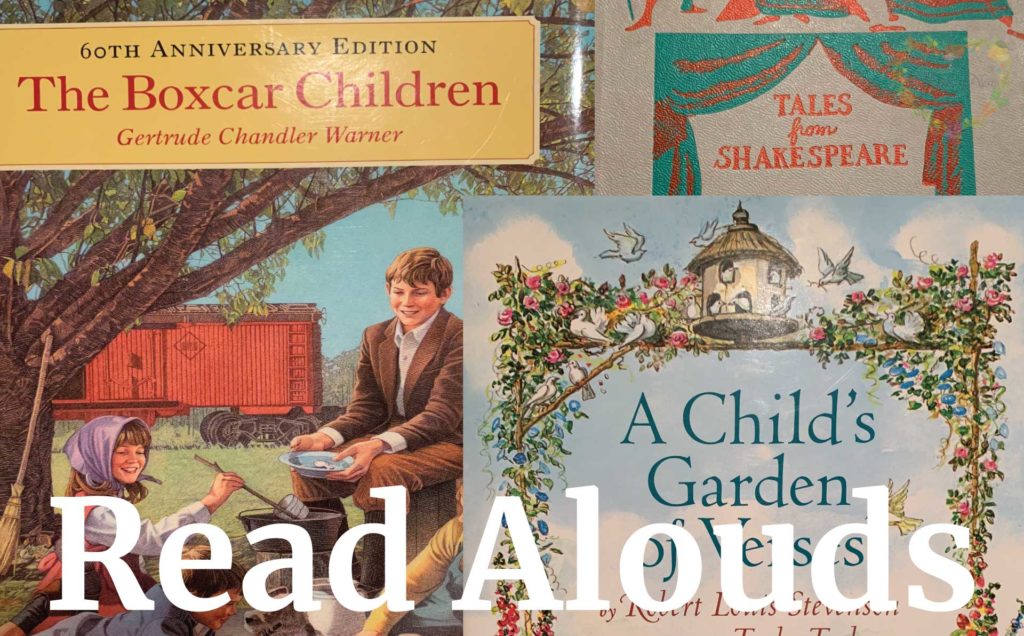
The Fun of “Read Alouds”
In the world of Living Books, many were written to be read aloud for the whole family to enjoy. When my son was young, he loved for me to read to him. And one of the best things about reading aloud to your children is that you can expose them to rich and vibrant literature that they can understand but might be above their reading level.
The spoken word is a wonderful way for your children to “read” the great works and hear the proper intonation of words thanks to your adult’s voice. You’ll expose your children to an extensive array of vocabulary words that will improve their own speaking ability.
Never Use Textbooks?
As you can tell so far, I am a big fan of Living Books. Now, am I saying never to use textbooks? No. If you have a child who does well with textbooks and workbooks, that’s great! It just wasn’t our experience.
To a certain extent, you might say I am biased to the Charlotte Mason method of home education. But I highly recommend that no matter what type of learner you have, every student can benefit from incorporating some of the techniques recommended by Charlotte Mason.
When you follow the Charlotte Mason method of home education, you will be able to observe those areas of learning for which your child has a real interest—a passion for. Knowing the topics your child loves allows you to delve deeper into those subjects with more advanced Living Books.
You never know what may happen! You may see the beginning of a budding interest in an area that will ultimately serve as a lifelong career. And even if your children’s interest takes more of a hobby route than a career path, you will have certainly developed a lifelong learner. Nothing can be more rewarding for both parent and child!
Free Homeschooling Lesson Plans
If you are interested in homeschooling the Charlotte Mason way, there are a number of free resources on the Internet that are here to help. Here are my two favorites:
So What About Traditional Foods?
As I shared in the opening paragraph, I actually learned a lot about Traditional Foods from Charlotte Mason. Well, let me rephrase that. I learned a lot about how to run a Traditional Foods Kitchen smoothly.
Charlotte Mason’s method of home education is a very gentle way of educating your children. And I realized that this gentle approach would transition beautifully into my daily kitchen life. I didn’t need to stress over every little detail. And I did not need to be perfect. What I needed to do was to create a warm and cozy kitchen where simple, nutrient-rich meals were (and still are) served with love.
A Traditional Foods Mini-Course
If you or your students want to learn more about Traditional Foods, check out the following videos, which make a great introductory course on traditional foods! The Start with a Roast Chicken video is a delicious “lab” for you and your students to work on to accompany the course videos.
In the first video, I discuss one of my favorite books on the subject (and definitely a Living Book!) titled Nourishing Traditions by Sally Fallon. In a later video, I share my thoughts on what I believe to be the essential Traditional Foods every kitchen should have.
- Master the Basics: Traditional Foods Cooking Course (15 Free Masterclass videos)
Free Traditional Foods Pantry List
To accompany the Traditional Foods mini-course, be sure to download my FREE 36-page Essential Traditional Foods Four-Corners Pantry List. This detailed eBook lists all the foods you will want to stock in your Working Pantry (Everyday Pantry), your Refrigerator, your Freezer, and your Extended Pantry (Prepper Pantry).
But this guide is much more than just a list of traditional foods. I also share links to videos that show you how to prepare these foods and incorporate them into your meals. Plus, I include lots of information about traditional foods that may be new to you.
And if you’re looking for a printed book full of my traditional foods recipes that shows you how to create a traditional foods kitchen, be sure to order your copy of my new bestselling book, The Modern Pioneer Cookbook.
Join the Traditional Foods Kitchen Academy
Are you looking for more traditional foods videos? If so, I invite you to join the Traditional Foods Kitchen Academy. Members of this optional paid YouTube community get access to exclusive videos, live streams, and other members-only perks. Plus, your YouTube comments include a special members-only badge.
Kitchen Academy Videos
The Only Traditional Recipes You’ll Ever Need!
Focus on traditional recipes with real food. Don’t chase trends.
Let’s Talk Akkermansia: A Tiny Helper for Big Gut Health
Discover how Akkermansia muciniphila supports gut and immune health—and how traditional foods help this mighty microbe thrive.
How to Eat a Mediterranean Diet with a Keto Twist
Explore a Mediterranean-Keto twist with a full sample menu focused on healthy fats, quality proteins, and low-carb veggies.
Stay in Touch with Mary’s Nest
- Subscribe to My YouTube Channel for Traditional Foods Videos (Free) - When you subscribe, be sure to click on the notification bell that will let you know each time I upload a new video.
- Subscribe to Mary’s Traditional Foods Newsletter (Free) - Get a free 36-page eBook for signing up: How to Stock Your Essential Traditional Foods Four-Corners Pantry.
- Join the Traditional Foods Kitchen Academy - For more detailed videos and exclusive members-only perks, join my YouTube membership community.
- Order The Modern Pioneer Cookbook - Get a hardcover book of Mary's nourishing recipes from a Traditional Foods Kitchen. This bestselling cookbook is published by Penguin Random House with their DK imprint.
- Preorder The Modern Pioneer Pantry - Be one of the first to get Mary's hardcover book about preserving food and making delicious meals from your Four Corners Pantry. Mary's second cookbook is also published by Penguin Random House.
I look forward to having you join me in my Texas Hill Country Kitchen!
Shop for items used in this blog post or video
Favorite Kitchen Supplies
- Favorite Aprons
- Whisk
- Silica Gel Packets (Helps keep moisture from building up in your mix)
- Cast Iron Dutch Oven
- 8-Quart Slow-Cooker
- Fat Separator (Clever kitchen device to help you decant bone broth)
- Flour Sack Towels
Amazon Shop and Shopping Guide
- Visit Mary’s Nest Amazon Shop
- Visit my Shopping Guide page
Get up to 15% off for stocking your Traditional Foods Pantry and equipping your Modern Pioneer Kitchen, including discounts from US Wellness Meats, Farmhouse Teas, Lehman's, Masontops, Cultures for Health, Survival Garden Seeds, Redmond Real Salt, Plan to Eat, and More!
More Homeschooling Books
Books for Mothers
- Charlotte Mason Home Education
- Charlotte Mason Companion
- A Charlotte Mason Education
- More Charlotte Mason Education
- Mother Culture
- A Mother’s Rule of Life
- Real Learning in the Heart of the Home
- Honey for a Child’s Heart
- A Pocketful of Pinecones
Cooking and Science Living Books
English/Grammar Living Books
Geography/History Living Books
Literature/Poetry (and fun Read Alouds) Living Books
Science Living Books
- James Herriot’s Treasury
- Measuring Penny
- Pagoo
- Snowflake Bentley
- The Boy Who Drew Birds
- The Friar Who Grew Peas
